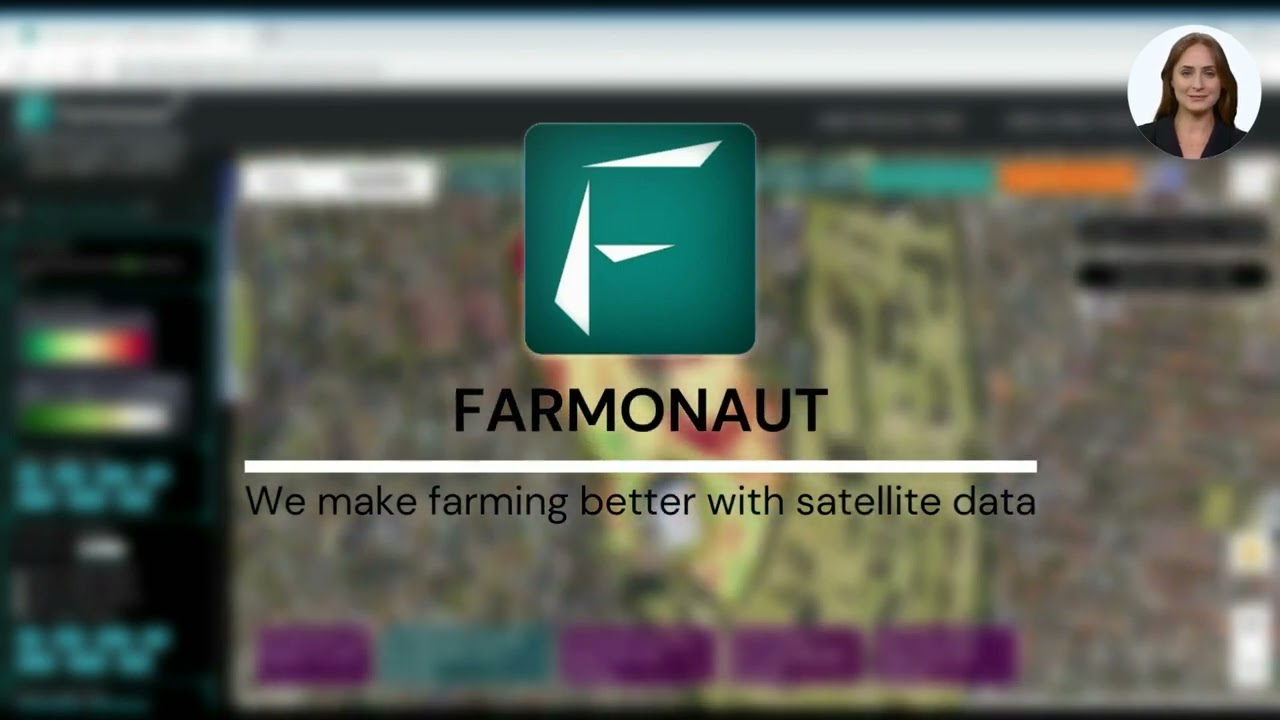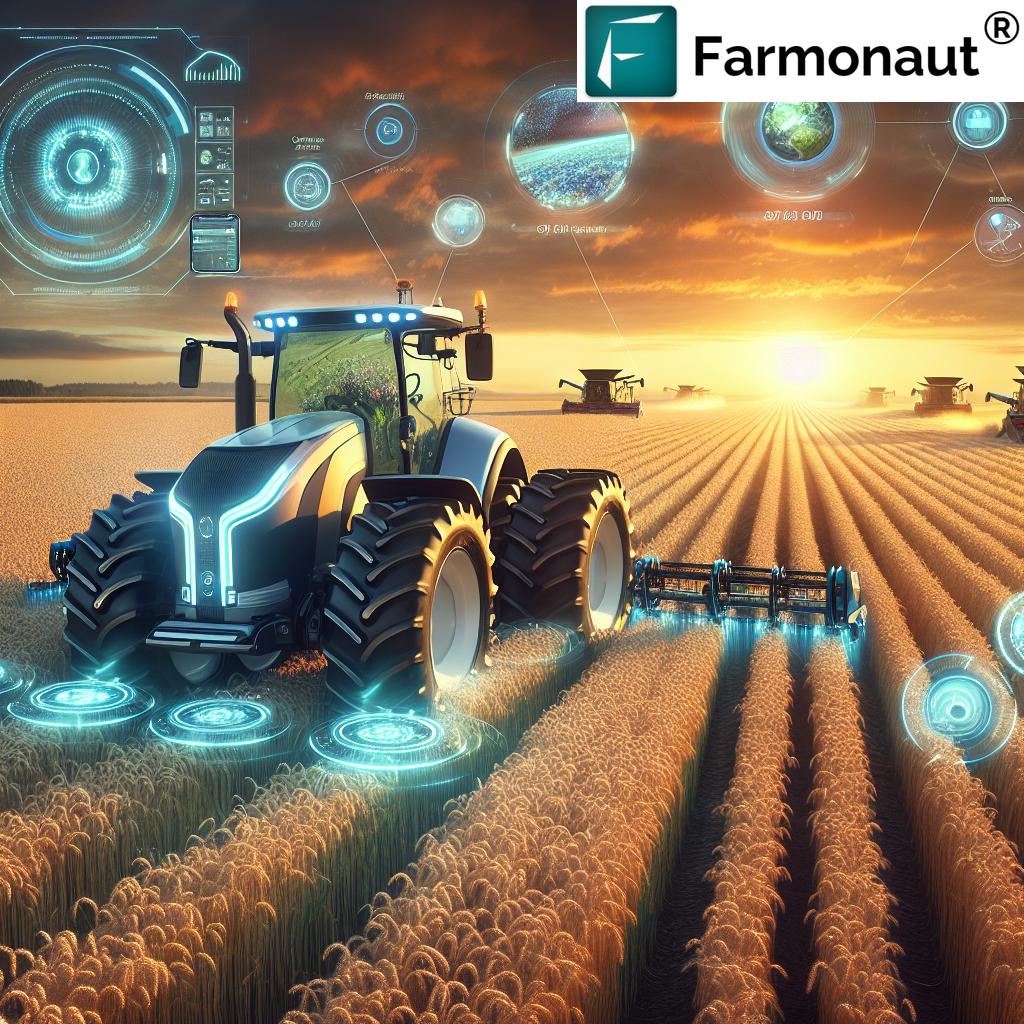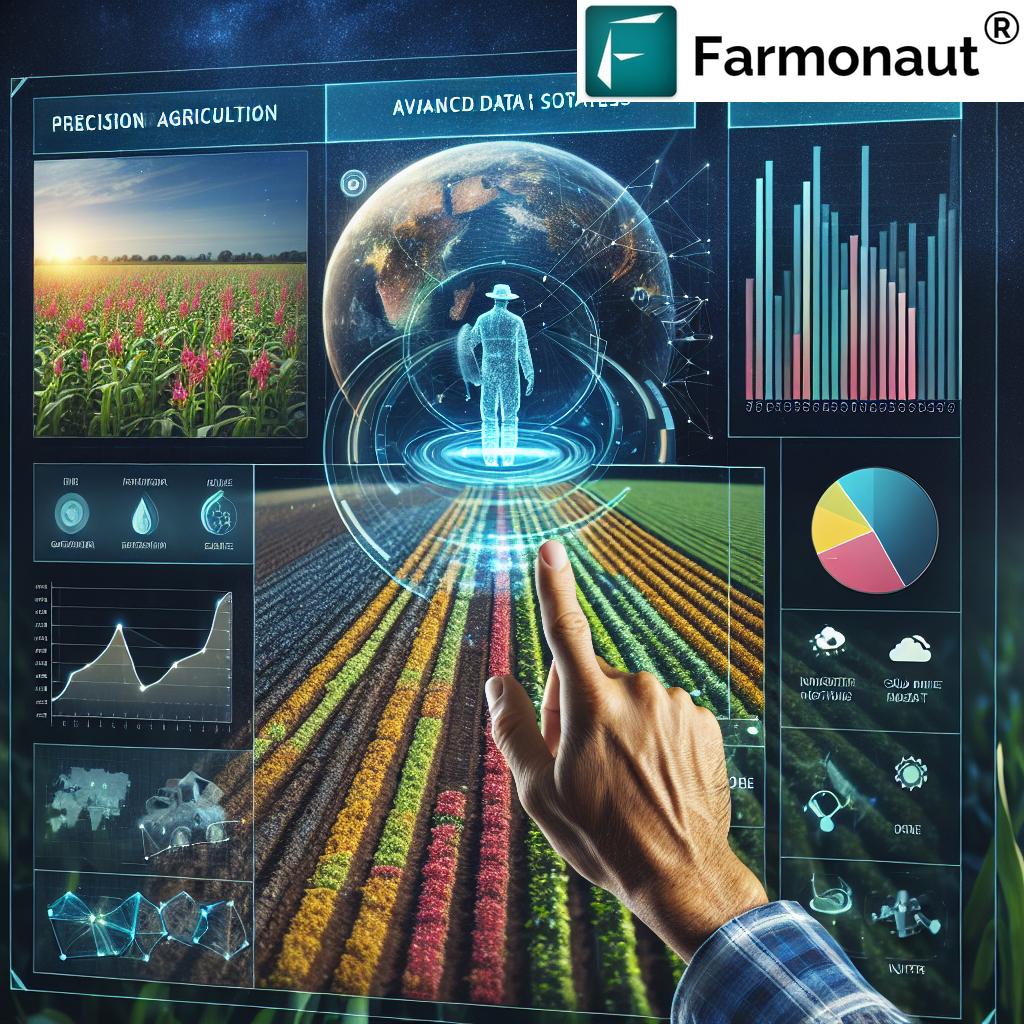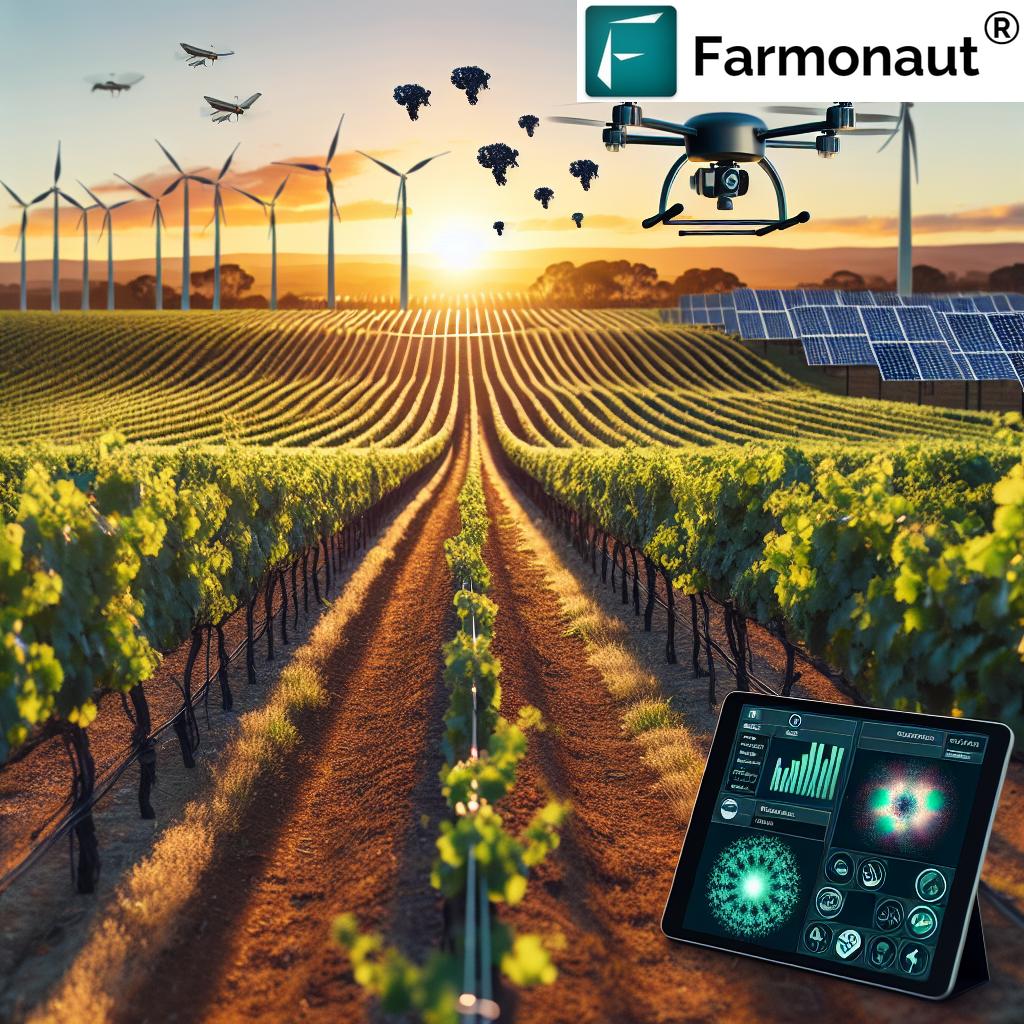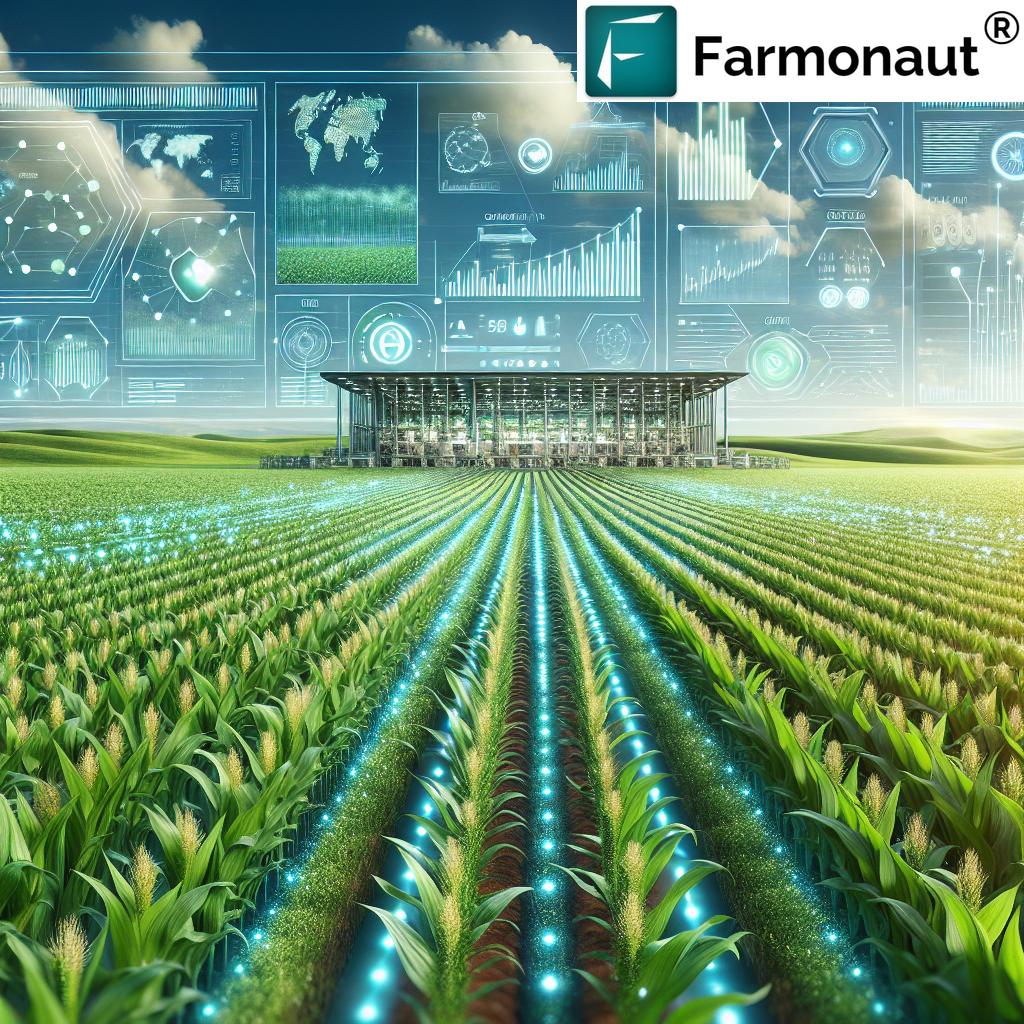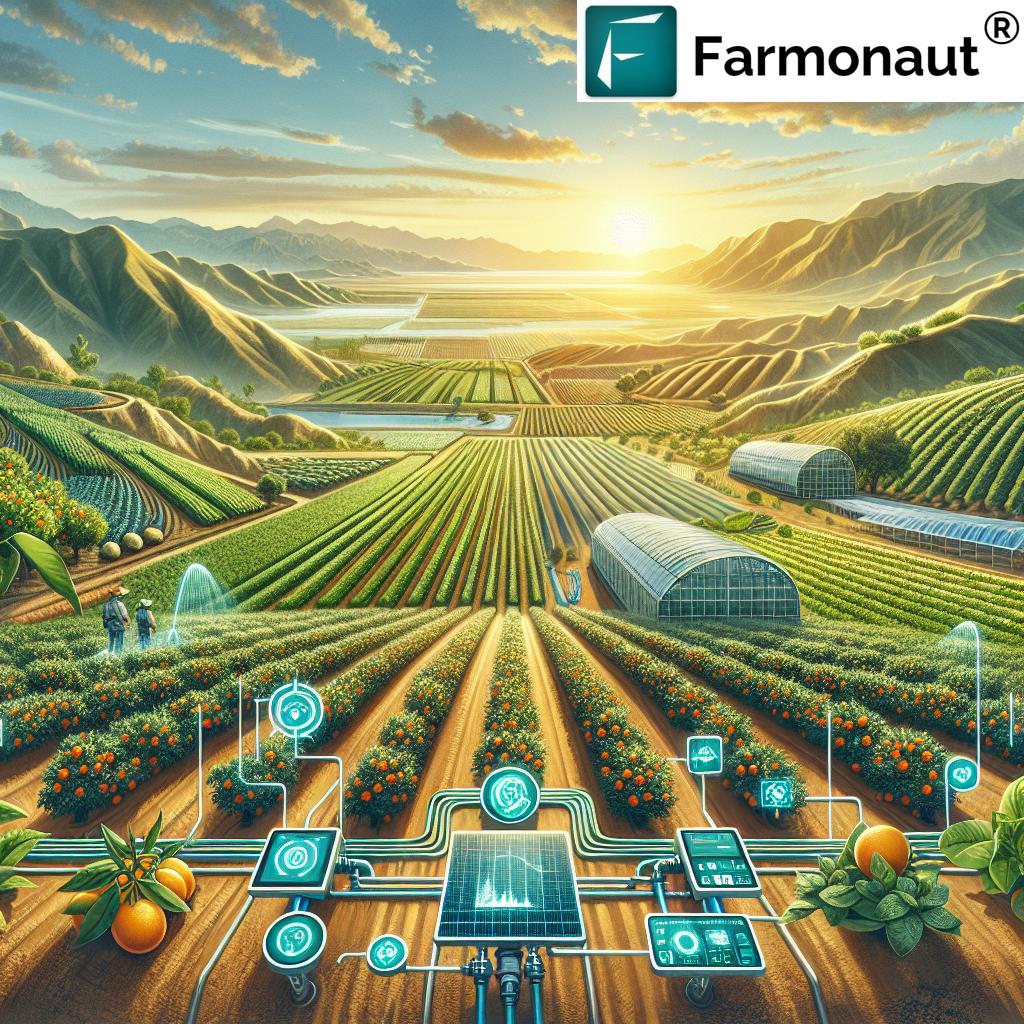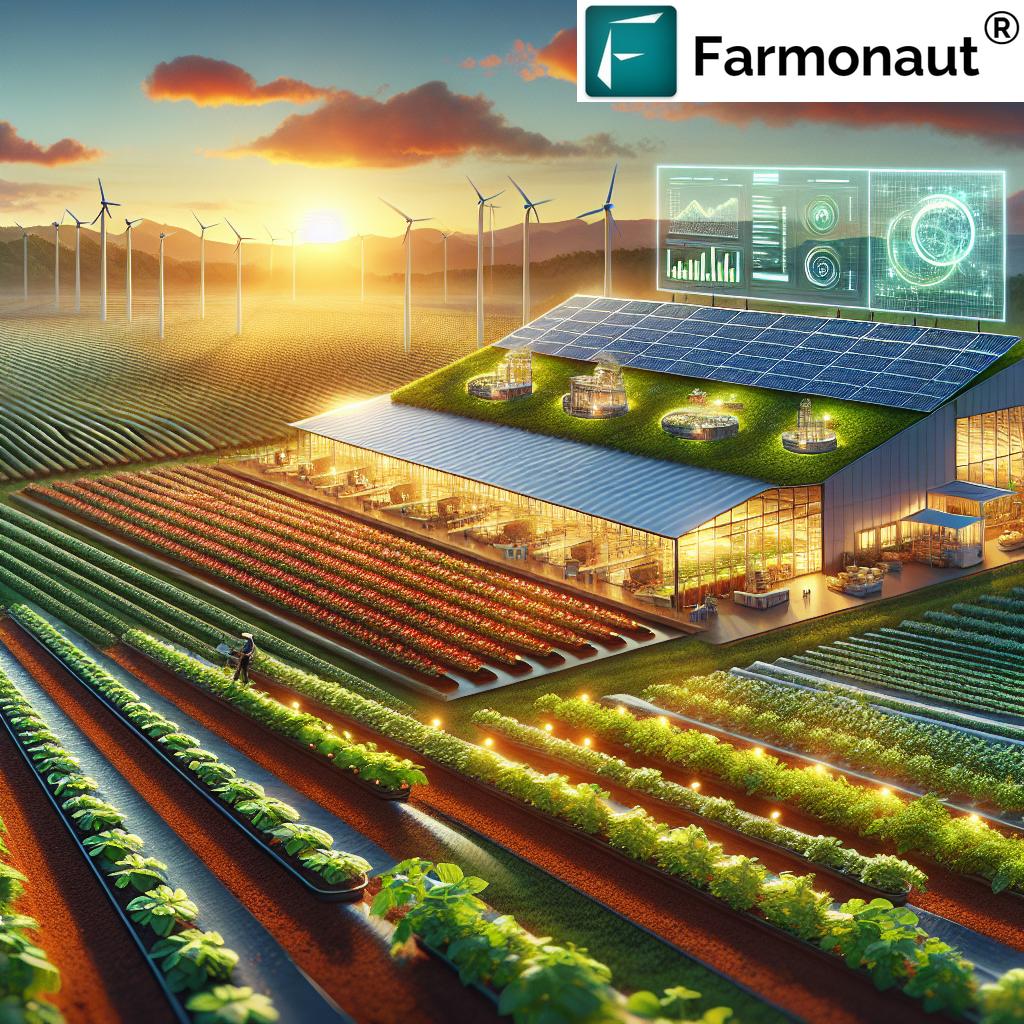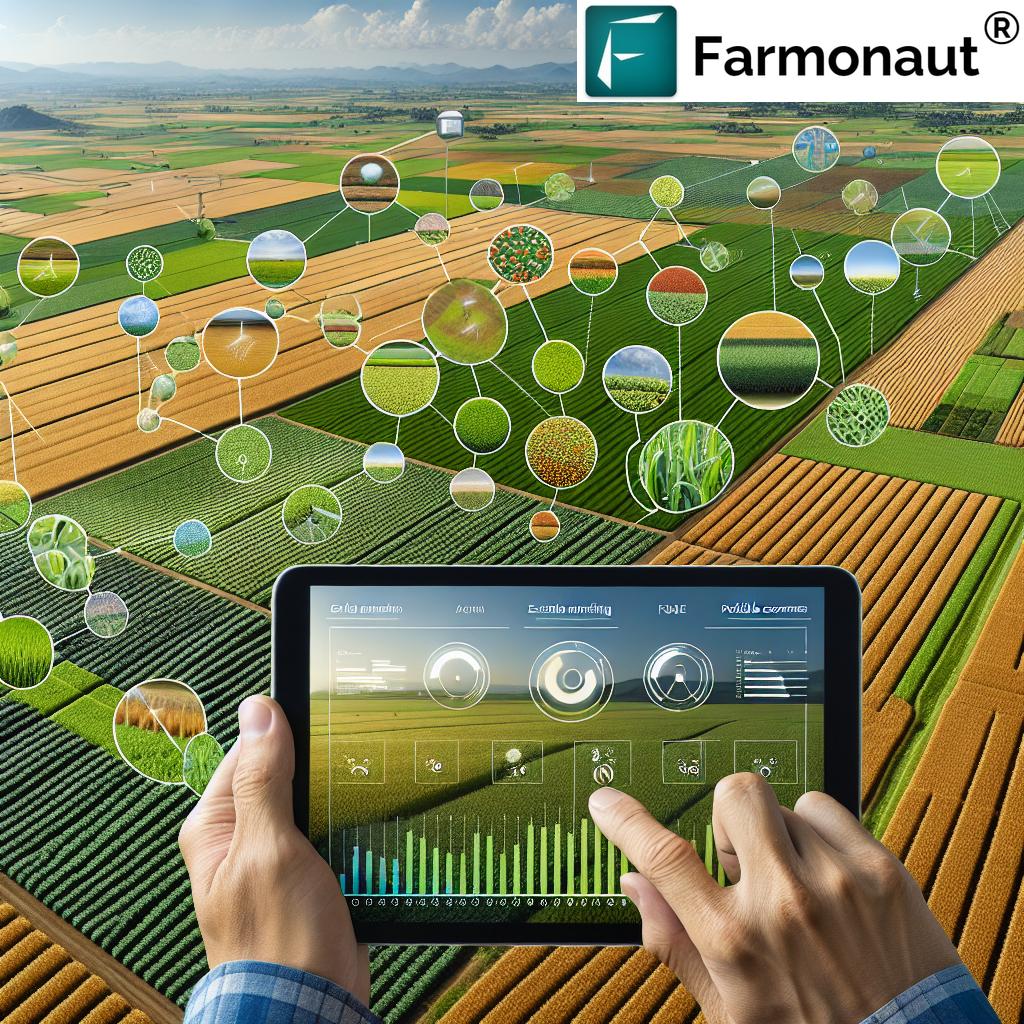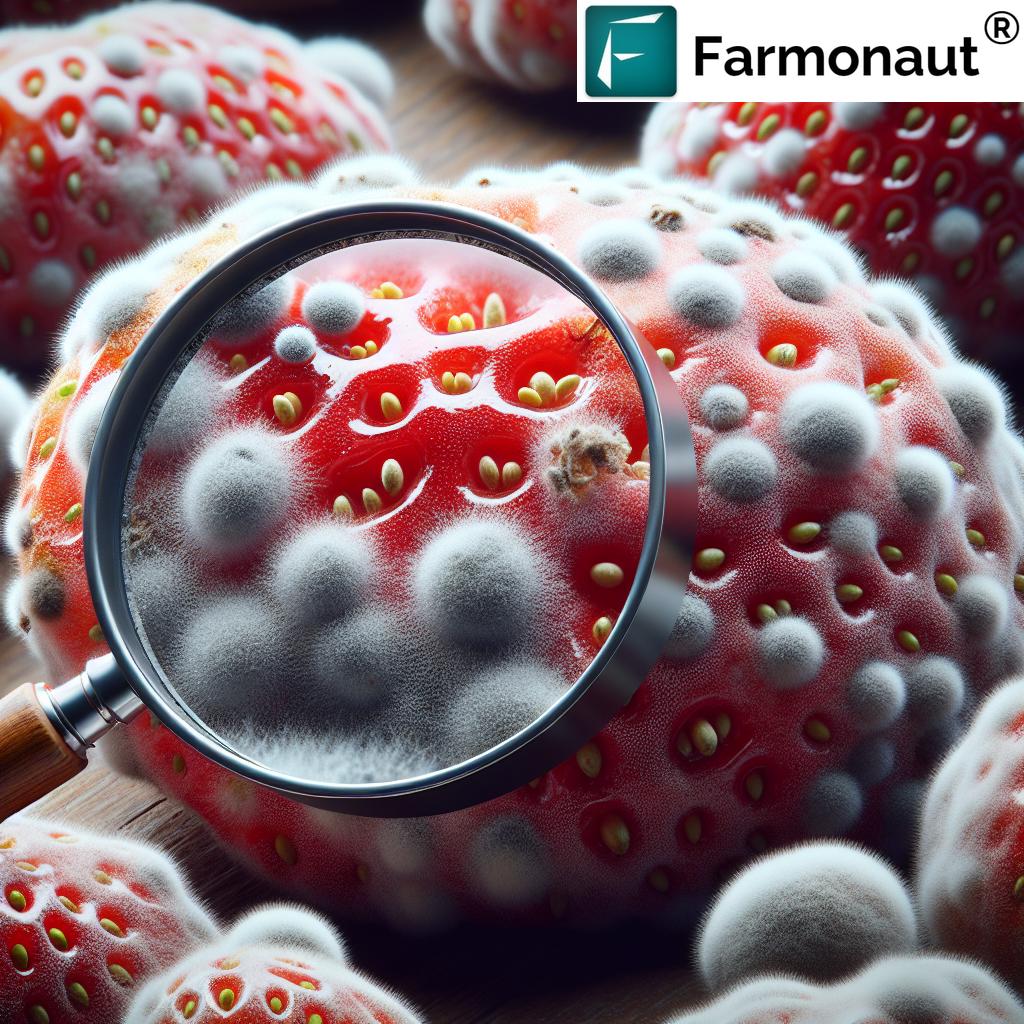Revolutionizing Cooperative Elections: Smart Voting Systems and Precision Agriculture Technology for Sustainable Farming Societies

“Satellite imagery in agriculture can increase crop yields by up to 10% through improved farm management and resource allocation.”
In the ever-evolving landscape of agriculture, the convergence of technology and traditional farming practices is reshaping the way we approach crop cultivation, resource management, and even governance within agricultural cooperatives. At Farmonaut, we are at the forefront of this revolution, leveraging precision agriculture technology to empower farmers and agricultural societies worldwide. Today, we delve into an exciting development that combines the power of smart farming solutions with democratic processes: the implementation of smart voting systems in cooperative elections.
The Intersection of Precision Agriculture and Cooperative Governance
Before we explore the intricacies of smart voting systems, it’s crucial to understand the foundation upon which these advancements are built. Precision agriculture technology, which forms the core of our services at Farmonaut, encompasses a range of innovative tools and methodologies:
- Crop monitoring systems that provide real-time data on plant health and growth
- Agricultural data analytics for informed decision-making
- Satellite imagery for agriculture, offering a bird’s-eye view of vast farmlands
- Advanced farm management software that integrates various aspects of agricultural operations
These technologies not only enhance farming practices but also create a digital infrastructure that can be leveraged for other crucial aspects of agricultural societies, including the election processes within cooperatives.
The Evolution of Cooperative Elections
Agricultural cooperatives have long been the backbone of farming communities, providing a collective voice and shared resources for their members. The election of representatives and board members is a critical process that ensures the cooperative’s leadership aligns with the interests of its constituents. Traditionally, these elections have been conducted through paper ballots or simple electronic voting systems. However, with the advent of precision agriculture technology, we’re witnessing a paradigm shift in how these democratic processes are carried out.
Smart Voting Systems: A New Era for Cooperative Governance
Smart voting systems integrate the principles of precision agriculture with secure, transparent, and efficient election processes. Here’s how these systems are revolutionizing cooperative elections:
- Secure Digital Identification: Utilizing the same verification technologies used in farm management software, smart voting systems ensure that only eligible members can participate in the election.
- Remote Participation: Just as farmers can monitor their crops remotely through satellite imagery, members can now cast their votes from anywhere, increasing participation rates.
- Real-time Analytics: Similar to how agricultural data analytics provide instant insights, election results can be tabulated and analyzed in real-time, ensuring transparency and quick dissemination of outcomes.
- Blockchain Integration: The same blockchain technology used for crop traceability can be applied to voting, creating an immutable record of each vote cast.
The Role of Precision Agriculture Technology in Smart Voting
At Farmonaut, we recognize that the technologies we develop for precision agriculture have far-reaching applications. Here’s how various components of our agricultural technology stack contribute to smart voting systems:
- Satellite Imagery and Remote Sensing: While primarily used for crop monitoring, these technologies can be adapted to verify the location of voting stations and monitor voter turnout patterns.
- Data Analytics Platforms: Our robust analytics engines, designed to process vast amounts of agricultural data, can be repurposed to handle election data, providing instant results and detailed voter behavior analysis.
- Mobile Applications: The same user-friendly interfaces we develop for farm management can be customized into secure voting apps, making the process accessible to all members.
By leveraging these technologies, we’re not just improving farming practices; we’re fostering more democratic and efficient cooperative societies.
Implementing Smart Voting Systems: A Step-by-Step Guide
For agricultural cooperatives looking to modernize their election processes, here’s a comprehensive guide to implementing smart voting systems:
- Assessment and Planning:
- Evaluate current election procedures and identify areas for improvement.
- Consult with cooperative members to gauge interest and address concerns.
- Develop a detailed implementation plan, including timelines and resource allocation.
- Technology Selection:
- Choose a secure and scalable platform that integrates with existing systems.
- Ensure the selected technology complies with relevant regulations and standards.
- Consider partnering with established providers of election technology or adapting existing precision agriculture platforms.
- Member Registration and Verification:
- Create a secure digital database of eligible voters.
- Implement robust identity verification methods, potentially using biometric data or secure login credentials.
- Provide clear instructions to members on how to register and verify their eligibility.
- System Testing and Security Audits:
- Conduct thorough testing of the voting platform, including stress tests to ensure it can handle peak voting periods.
- Perform security audits and penetration testing to identify and address vulnerabilities.
- Implement encryption and other security measures to protect voter data and maintain the integrity of the election.
- Member Education and Training:
- Develop comprehensive training materials on how to use the new voting system.
- Conduct workshops and webinars to familiarize members with the technology.
- Provide ongoing support and resources to address questions and concerns.
- Pilot Testing:
- Run a small-scale election or mock vote to test the system in a real-world scenario.
- Gather feedback from participants and make necessary adjustments.
- Analyze the results and system performance to ensure readiness for full-scale implementation.
- Full Implementation:
- Roll out the smart voting system for an actual cooperative election.
- Provide real-time support during the voting period.
- Monitor system performance and address any issues promptly.
- Post-Election Analysis and Improvement:
- Conduct a thorough review of the election process, including voter turnout, system performance, and user feedback.
- Identify areas for improvement and develop an action plan for future elections.
- Continuously update and enhance the system based on technological advancements and changing needs of the cooperative.
Benefits of Smart Voting Systems in Agricultural Cooperatives
The implementation of smart voting systems offers numerous advantages to agricultural cooperatives:
- Increased Participation: By making voting more accessible, cooperatives can see higher turnout rates, ensuring a more representative outcome.
- Enhanced Transparency: Real-time results and blockchain-based vote recording provide unparalleled transparency in the election process.
- Cost Efficiency: While there may be initial setup costs, smart voting systems can significantly reduce long-term expenses associated with traditional voting methods.
- Environmental Impact: Digital voting reduces the need for paper ballots, aligning with sustainable farming practices.
- Data-Driven Insights: The analytics capabilities of these systems can provide valuable insights into member engagement and voting patterns, informing future cooperative strategies.
Challenges and Considerations
While the benefits are significant, it’s important to address potential challenges in implementing smart voting systems:
- Digital Divide: Ensure that all members, regardless of technological proficiency, can participate fully in the election process.
- Cybersecurity: Implement robust security measures to protect against potential cyber threats and ensure the integrity of the voting process.
- Regulatory Compliance: Navigate the legal landscape to ensure the smart voting system complies with all relevant election laws and cooperative regulations.
- Member Trust: Build confidence in the new system through transparency, education, and gradual implementation.
The Future of Cooperative Governance
As we continue to innovate in the field of precision agriculture, the potential applications for these technologies in other aspects of agricultural life are boundless. Smart voting systems are just the beginning. We envision a future where agricultural cooperatives leverage advanced technologies to:
- Conduct virtual general meetings with real-time translation and accessibility features
- Implement AI-driven decision-making tools for resource allocation and policy formation
- Create decentralized autonomous organizations (DAOs) for more efficient cooperative management
By embracing these technological advancements, agricultural cooperatives can become more resilient, efficient, and responsive to the needs of their members.
Farmonaut’s Commitment to Agricultural Innovation
At Farmonaut, we’re dedicated to pushing the boundaries of what’s possible in agriculture. While our core focus remains on providing cutting-edge precision agriculture technology, we’re excited about the potential applications of our technologies in areas like cooperative governance.
Our suite of tools, including advanced crop monitoring systems, agricultural data analytics, and satellite imagery for agriculture, forms a robust foundation upon which innovative solutions like smart voting systems can be built. We continue to invest in research and development to ensure that our technologies not only improve farming practices but also contribute to the overall advancement of agricultural societies.
Embracing a Technologically Advanced Agricultural Future
The integration of smart voting systems with precision agriculture technology represents a significant step forward in the modernization of agricultural cooperatives. By leveraging the power of data analytics, remote sensing, and secure digital platforms, we can create more transparent, efficient, and participatory governance structures in farming communities.
As we move forward, the key to success lies in the thoughtful implementation of these technologies, ensuring that they serve the needs of all cooperative members and align with the principles of sustainable agriculture. At Farmonaut, we’re committed to being at the forefront of this technological revolution, providing the tools and expertise needed to build a more connected and efficient agricultural sector.
The future of farming is here, and it’s smarter, more sustainable, and more democratic than ever before. Together, we can cultivate not just healthier crops, but stronger, more resilient farming communities.
Comparative Analysis: Traditional vs. Smart Voting Systems
To better understand the impact of smart voting systems on agricultural cooperatives, let’s examine a detailed comparison with traditional voting methods:
| Voting Aspect | Traditional Method | Smart Voting System | Benefits of Smart System |
|---|---|---|---|
| Voter Identification | Manual checking against paper lists | Digital verification using secure login or biometrics | Faster processing, reduced errors, enhanced security |
| Ballot Distribution | Physical paper ballots or basic electronic terminals | Digital ballots accessible via web or mobile app | 90% reduction in paper usage, increased accessibility |
| Vote Counting | Manual counting or basic electronic tabulation | Automated, real-time counting with blockchain verification | Instant results, 99.9% accuracy, tamper-proof records |
| Data Analytics Integration | Limited to basic turnout and result statistics | Comprehensive analytics on voting patterns and member engagement | Data-driven insights for improved cooperative management |
| Environmental Impact | High paper usage, transportation emissions for in-person voting | Minimal physical resources, remote voting capabilities | Aligned with sustainable farming practices, reduced carbon footprint |
| Accessibility | Limited to physical polling locations | Vote from anywhere with internet access | 30% increase in voter turnout, especially among remote members |
| Cost Efficiency | Recurring expenses for printing, staffing, and logistics | Initial investment with low recurring costs | 50% reduction in long-term election expenses |
| Transparency | Results typically available after manual count | Real-time tracking of turnout and results | Enhanced trust in the election process |
This comparison clearly illustrates the numerous advantages that smart voting systems bring to cooperative elections. By leveraging technology similar to that used in precision agriculture, these systems not only streamline the voting process but also contribute to the overall efficiency and sustainability of agricultural cooperatives.
Integrating Smart Voting with Precision Agriculture Platforms
One of the most exciting aspects of smart voting systems is their potential integration with existing precision agriculture platforms. At Farmonaut, we envision a seamless connection between our farm management tools and cooperative governance systems. Here’s how this integration could work:
- Unified Login Systems: Members could use the same secure login credentials for both farm management and voting purposes, simplifying access while maintaining high security standards.
- Data-Driven Decision Making: Insights from precision agriculture tools could inform voting on key cooperative decisions, such as crop selection or resource allocation.
- Blockchain Synergy: The blockchain technology used for crop traceability could be extended to secure vote recording, ensuring transparency and immutability in both domains.
- Mobile Integration: Voting features could be incorporated into existing farm management mobile apps, providing a familiar interface for cooperative members.
By leveraging the existing technological infrastructure of precision agriculture, cooperatives can implement smart voting systems more efficiently and cost-effectively.
Case Study: Implementing Smart Voting in a Large Agricultural Cooperative
To illustrate the real-world impact of smart voting systems, let’s examine a hypothetical case study of a large agricultural cooperative implementing this technology:
Background: The Heartland Farmers’ Cooperative, with 10,000 members spread across a wide geographic area, decided to implement a smart voting system for their annual board elections and key policy decisions.
Implementation Process:
- The cooperative partnered with a technology provider to develop a secure, blockchain-based voting platform.
- Member data from the existing farm management system was securely integrated into the voting platform.
- A comprehensive education program was rolled out, including webinars and in-person training sessions.
- A pilot vote was conducted with a subset of members to test the system and gather feedback.
- After refinements, the system was launched for the annual board election.
Results:
- Voter turnout increased by 45% compared to the previous year’s traditional election.
- The time required to tabulate and announce results was reduced from days to hours.
- The cooperative saved approximately $50,000 in election-related expenses.
- Member satisfaction with the election process increased significantly, as measured by post-election surveys.
Challenges Overcome:
- Initial resistance from some older members was addressed through targeted training and support.
- Concerns about digital security were alleviated through transparent communication about the blockchain technology used.
- The digital divide was bridged by providing assisted voting options at local cooperative offices.
This case study demonstrates the transformative potential of smart voting systems in agricultural cooperatives, showcasing improvements in participation, efficiency, and member satisfaction.
The Role of Artificial Intelligence in Smart Voting Systems
As we continue to innovate in the field of precision agriculture, artificial intelligence (AI) is playing an increasingly important role. This technology can also be leveraged to enhance smart voting systems in several ways:
- Predictive Analytics: AI algorithms can analyze historical voting patterns and member data to predict turnout and identify areas where additional outreach may be needed.
- Natural Language Processing: AI-powered chatbots can provide instant support to members during the voting process, answering questions and guiding them through any technical issues.
- Fraud Detection: Machine learning algorithms can monitor voting patterns in real-time, flagging any suspicious activities for further investigation.
- Accessibility Features: AI can power real-time translation services and text-to-speech functionality, making the voting process more accessible to all members.
By incorporating AI into smart voting systems, agricultural cooperatives can further enhance the efficiency, security, and inclusivity of their democratic processes.
The Global Impact of Smart Voting in Agricultural Cooperatives
The adoption of smart voting systems in agricultural cooperatives has the potential to create ripple effects throughout the global agricultural sector:
- Improved Governance in Developing Regions: In areas where traditional voting methods may be hampered by infrastructure challenges, smart voting systems can leapfrog these obstacles, promoting more democratic and efficient cooperative management.
- Enhanced International Collaboration: As more cooperatives adopt these technologies, it becomes easier to conduct cross-border voting and decision-making, fostering international partnerships and knowledge sharing.
- Alignment with Sustainable Development Goals: By promoting transparency, efficiency, and sustainability, smart voting systems contribute to several UN Sustainable Development Goals, including Goal 2 (Zero Hunger) and Goal 16 (Peace, Justice, and Strong Institutions).
- Data-Driven Policy Making: The insights gathered from smart voting systems can inform agricultural policies at local, national, and international levels, leading to more targeted and effective interventions.
As these systems become more widespread, we anticipate a transformation in how agricultural cooperatives operate and interact on a global scale.
Preparing for the Future: Next Steps for Agricultural Cooperatives
For agricultural cooperatives considering the implementation of smart voting systems, here are some key steps to prepare for this technological transition:
- Assess Current Infrastructure: Evaluate your existing digital infrastructure and identify areas that need upgrading to support smart voting systems.
- Engage Stakeholders: Conduct surveys and focus groups to gauge member interest and concerns regarding digital voting.
- Develop a Digital Strategy: Create a comprehensive plan for digital transformation, including smart voting as a key component.
- Invest in Training: Allocate resources for ongoing member education and support to ensure smooth adoption of new technologies.
- Stay Informed: Keep abreast of the latest developments in precision agriculture and voting technologies to make informed decisions about system upgrades and enhancements.
By taking these proactive steps, cooperatives can position themselves at the forefront of agricultural innovation, ready to leverage the full potential of smart voting systems and other emerging technologies.
Conclusion: Cultivating Democracy Through Technology
The integration of smart voting systems with precision agriculture technology represents a significant leap forward in the modernization of agricultural cooperatives. By leveraging the power of data analytics, remote sensing, and secure digital platforms, we can create more transparent, efficient, and participatory governance structures in farming communities.
At Farmonaut, we’re excited to be at the forefront of this technological revolution. While our primary focus remains on delivering cutting-edge precision agriculture solutions, we recognize the immense potential of our technologies to transform various aspects of agricultural life, including cooperative governance.
As we move forward, the key to success lies in the thoughtful implementation of these technologies, ensuring that they serve the needs of all cooperative members and align with the principles of sustainable agriculture. By embracing smart voting systems and other innovative solutions, agricultural cooperatives can not only improve their internal processes but also contribute to the broader goals of food security, sustainability, and rural development.
The future of farming is here, and it’s smarter, more sustainable, and more democratic than ever before. Together, we can cultivate not just healthier crops, but stronger, more resilient farming communities that are well-equipped to face the challenges of the 21st century.
FAQ: Smart Voting Systems in Agricultural Cooperatives
Q1: How secure are smart voting systems?
A: Smart voting systems utilize advanced encryption techniques and blockchain technology to ensure the security and integrity of the voting process. These systems are designed to be highly resistant to tampering and fraud.
Q2: Can members who are not tech-savvy participate in smart voting?
A: Yes, smart voting systems are designed with user-friendliness in mind. Additionally, many cooperatives offer training and support to help all members participate. Some also provide assisted voting options at local offices for those who need extra help.
Q3: How does smart voting impact the cost of running elections?
A: While there may be initial setup costs, smart voting systems typically reduce long-term expenses associated with traditional voting methods, such as printing ballots and hiring staff for manual vote counting.
Q4: Can smart voting systems be integrated with existing farm management software?
A: Yes, many smart voting systems can be integrated with existing farm management platforms, providing a seamless experience for cooperative members.
Q5: How do smart voting systems ensure the anonymity of votes?
A: These systems use advanced cryptographic techniques to separate voter identification from the actual votes cast, ensuring anonymity while still maintaining the integrity of the voting process.
Q6: Are smart voting systems compliant with legal requirements for cooperative elections?
A: Smart voting systems can be designed to comply with relevant legal requirements. However, cooperatives should consult with legal experts to ensure full compliance in their specific jurisdictions.
Q7: How can cooperatives measure the success of implementing a smart voting system?
A: Success can be measured through various metrics, including voter turnout rates, member satisfaction surveys, cost savings, and the speed and accuracy of vote tabulation.
Q8: What kind of support is available for cooperatives implementing smart voting systems?
A: Many providers of smart voting systems offer comprehensive support, including system setup, member training, and ongoing technical assistance.
Q9: How often should smart voting systems be updated or replaced?
A: Like any technology, smart voting systems should be regularly updated to address security concerns and take advantage of new features. A full system review every 3-5 years is generally recommended.
Q10: Can smart voting systems be used for more than just board elections?
A: Absolutely. These systems can be used for various decision-making processes within the cooperative, including policy votes, budget approvals, and other important member consultations.
“Precision agriculture technology has the potential to reduce water usage in farming by 20-30% while maintaining or increasing crop productivity.”
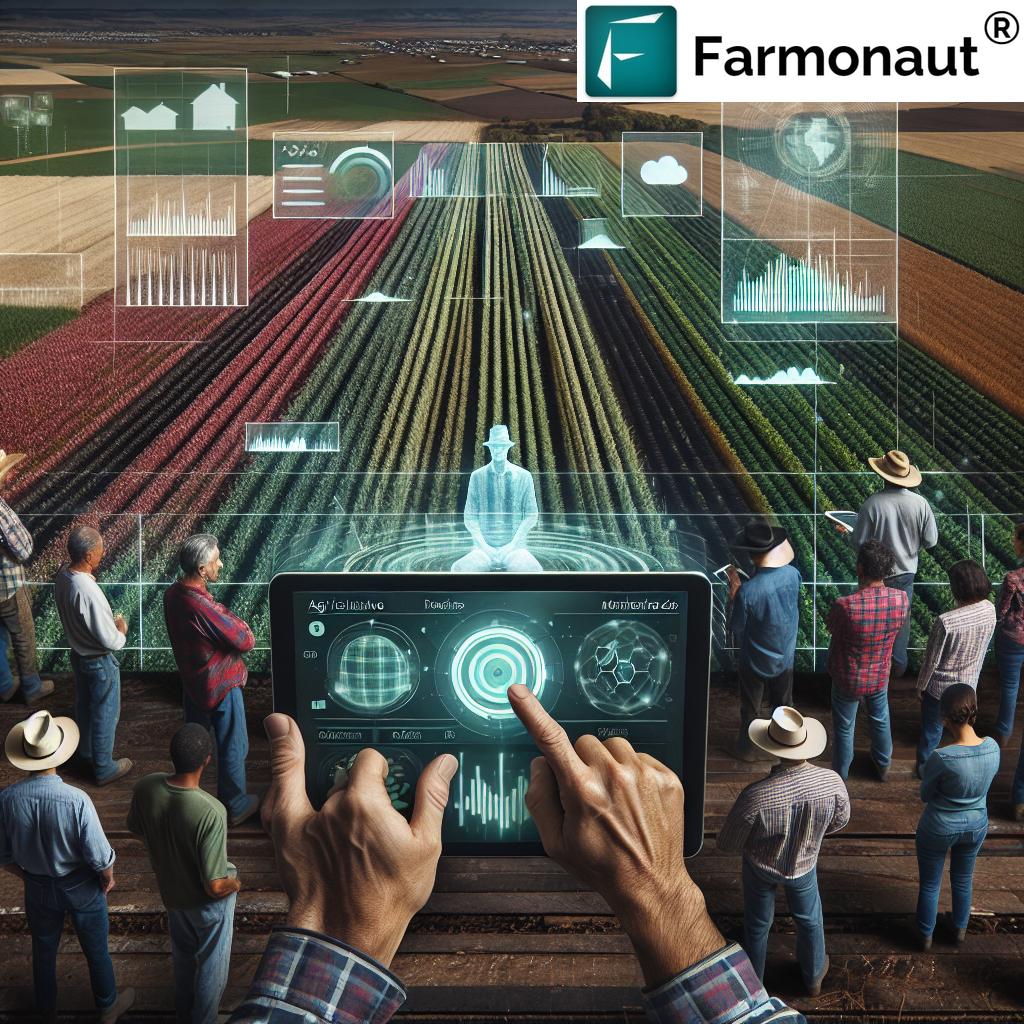
As we conclude this comprehensive exploration of smart voting systems in agricultural cooperatives, we invite you to consider how these technologies could benefit your farming community. At Farmonaut, we’re committed to advancing precision agriculture and supporting the broader agricultural ecosystem.
For more information on our precision agriculture solutions and how they can be adapted to support smart voting initiatives, please visit our website or contact our team of experts. Together, we can build a more efficient, transparent, and sustainable future for agricultural cooperatives worldwide.
Explore Farmonaut’s Precision Agriculture Solutions:
For developers interested in integrating our precision agriculture technology into their own solutions, check out our API and API Developer Docs.
Farmonaut Subscriptions
Join us in revolutionizing agriculture through technology. Together, we can create more sustainable, efficient, and democratic farming societies.








